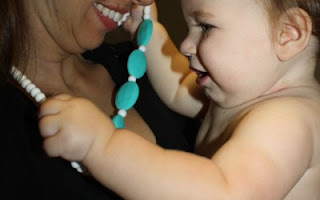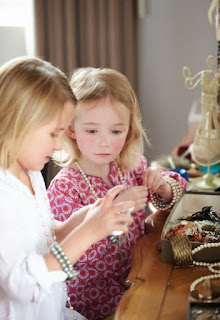Children’s jewelry is
intended to attract, appeal to a child. In the production of art/children’s jewelry, some manufacturers use lead as a base metal, often combined with
tin, since it produces an alloy that is easy to work with as well as easy for
shaping. Besides making it look heavy it is also cheap. In the process of
manufacturing, lead gets coated on the jewellery. Even short-term exposure to
lead may cause long-term adversarial impact on children’s health. Adding to the
grave situation, manufacturers coat jewelry items with bright colours to attract children, while most of these colours have organo-metallic compounds and
metals in them, loosely bound to the surface, which can leach easily.
This type of jewelry is most often worn by the
young, most of them children in the age group between 3 to 16 years, who are very
sensitive to lead exposures, since it is a critical time for neurological
development. Children (below 6 years) are recognised as the most susceptible to
lead exposure even at low levels. Pregnant women are the second most vulnerable
group. Lead also crosses the placenta and reaches the developing fetus.
Absorbed lead is rapidly taken up by blood and soft tissue, followed by a slower
redistribution to bone. Bone accumulates lead during much of the human life
span and may serve as an endogenous source of lead that may be released slowly
over many years after the exposure stops.
It has also been established medically worldwide,
that lead is a potent neurotoxin causing irreversible harms to human health and
environment. While lead levels are
regulated in children’s toys cadmium is not, though cadmium is toxic just the
same. Lead is also found in Antique painted furniture (including
cribs), buttons, hair ornaments, Old painted toys, Lead paint on kitchen
utensils, Imported painted toys. Also toys made of plastics (both PVC and non
PVC), contain lead and cadmium.
Main danger lies because of its advantage of
being cheap. cheapness of fashion jewelry or costume jewelry makes
- These items appeal to those with a small budget.
- These items often fall apart potentially leaving small parts laying around in junk drawers or on the floor to tempt a toddler.
LEAD
- The impact of even the smallest traces of lead on
brain development in children includes irreversible learning and developmental
problems leading to to lower IQ scores, delayed learning and shorter
attention spans.
- The EPA has listed lead
as a probable human carcinogen
- You Can learn more about how to detect lead content and its poisoning in Wikipedia, Please follow this link:- Lead poisoning
CADMIUM
- Cadmium is classified as a known human carcinogen,
associated with lung and prostate cancer
- Cadmium exposure is associated in animal studies
with developmental effects, including possible decreases in birth weight,
delayed sensory-motor development, hormonal effects, and altered behavior.
- Exposure to cadmium can result in bone loss and
increased blood pressure.
- Acute toxicity from ingestion of high levels of
cadmium can result in abdominal pain, nausea, iting and death.
- Acute toxicity from inhalation of high levels of cadmium can result in symptoms similar to metal fume fever and severe gastroenteritis from high levels of cadmium ingestion.
- Cadmium is extremely toxic metal, even dangerous than lead, and very hard to detect using house hold method similar to lead, most popular method to detect Cadmium is X-ray Fluorescence Spectrometry (XRF).
- You Can learn more about cadmium poisoning in Wikipedia, Please follow this link:- Cadmium poisoning.
Lead in jewelry and other products may look different from pure lead,
depending on how much lead is in the product. Items that are made with a high
percentage of lead are greyish in colour, heavy for their size and may leave a
grey mark when rubbed against a piece of white paper if the lead is not coated. There is no way to determine by how it looks whether a
piece of jewelry has a high level of cadmium in it. Cadmium
stays in the body for a long time so it is best to prevent the exposure of
young children to cadmium in jewelry. A blood test is the only accurate
way to find out if you or a family member has been exposed to lead and cadmium.
What we can do:
- Inspect your children's jewelry. Items made with a
high percentage of lead are heavy for their size.
- If you are concerned that a children's jewelry
item may contain lead or cadmium throw it away in your regular
household waste.
- Do not give young children adult jewelry to wear
or play with; it may contain lead or cadmium.
- Don't let kids suck or chew on any jewelry.
- If your child has sucked or chewed regularly on
jewelry and you think it may contain lead or cadmium, ask your
doctor to test your child's blood.
- A child who swallows jewelry containing lead or
cadmium is at high risk of developing serious and potentially
life-threatening health effects. Contact an emergency medical service
immediately.
- Check for product recalls by contacting the
retailer or manufacturer.
- Be choosy about your purchases for birthday parties for your children's friends. Stay away from cheap jewelry and jewelry making kits unless you can, without a doubt, verify the lead content.
As all know, prevention is better than
cure. In case of low-cost jewelry, which might make our outfits look better for a very low price;
they might also slowly poisoning us. Therefore some caution is required. The more educated and demanding the public is, the more pressure will be
on the manufacturers to adhere to strict standards regarding toxic substances
in jewelry and jewelry findings. So be bold, its better late than never....






